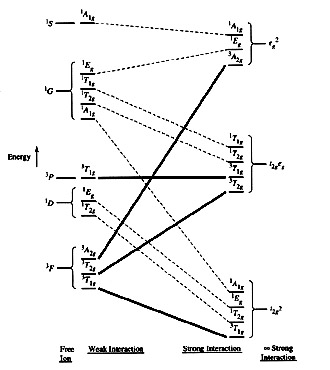From Miessler's Inorganic Chemistry, 5th edition, there is this correlation diagram for $d^{2}$ in a octahedral field.

On the left hand side, if it's not clear, it goes (from lowest to highest):
$^{3}F, ^{1}D, ^{3}P, ^{1}G, ^{1}S$.
But by Hund's rules mentioned even in the same chapter, one would expect the $^{3}P$ to show up right after the $^{3}F$ because of their higher spin multiplicities. And even after that, G should come before D. (the ordering for that being s,p,d,f,g in reverse for same spin multiplicities). I don't know of any reason for why the $^1D$ term is just above the $^3F$ term in this graph though. Is this an error or does anyone have an explanation?

